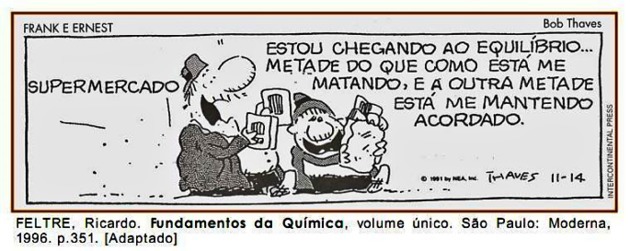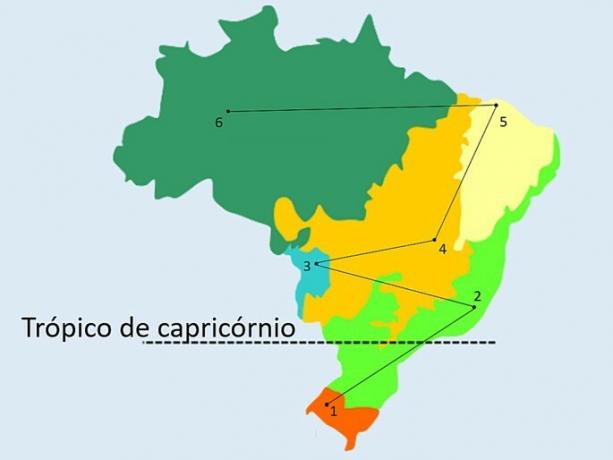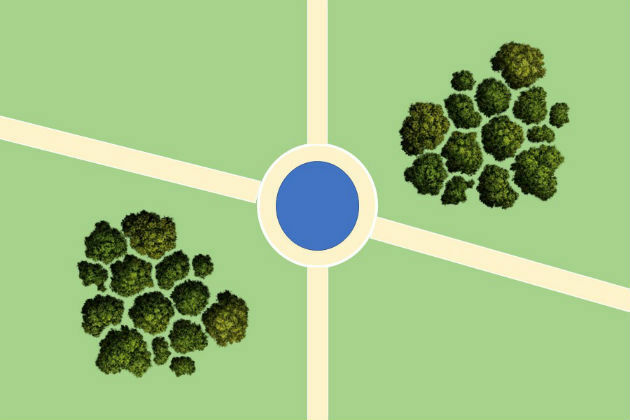The Russian Revolution of 1917 was a crucial fact in world history, as for the first time, socialist ideas came to power in a country.
It is, therefore, a content that is very present in the entrance exams and in the Enem, where the candidate must be aware of both the historical facts and the interpretations surrounding the Russian Revolution.
We've selected a series of questions on this topic with commented feedback for you to prepare.
Good studies!
question 1
(F. M. Santa Casa/SP) The February 1917 revolution in Russia can be characterized as:
a) a struggle led by Lenin to establish a Soviet state.
b) a reaction of the Orthodox Church against Rasputin's arrogance.
c) a rural-inspired conflict in order to support the muzhiks.
d) a bourgeois movement aimed at deposing Tsar Nicholas II.
e) an effort of intellectuals, committed to Bakunin's anarchist ideas.
Correct alternative: d) a bourgeois movement aimed at deposing Tsar Nicholas II.
The February Revolution of 1917 was carried out by bourgeois and army officers unhappy with Russia's participation in the First War.
Option "b" is wrong, as the Orthodox Church has taken a stand against this movement. The option "c" and "e" are wrong, because there was not yet Lenin's leadership, nor the participation of large numbers of peasants, much less Bakunin's anarchist ideas.
question 2
(UFMG) With regard to the Russian revolutionary process that culminated in the Bolsheviks' seizure of power in 1917, it can be said that:
a) In the phase called War Communism, one of the first measures taken by Lenin was the nationalization of banks and major industries.
b) The provisional government led by Kerensky, as soon as it took power, withdrew Russia from the war through the Treaty of Brest-Litovsky
c) The motto “Peace, Land and Bread” adopted by Stalin was fundamental for the mobilization of the peasantry and its engagement in the struggle on the side of the Mensheviks.
d) In the civil war between whites and reds, whites received help from mercenaries from all over Europe, recruited by capitalist countries.
e) During the NEP (New Economic Policy) phase, there was definitive nationalization of all industries, as well as the prohibition of the entry of foreign technicians.
Correct alternative: a) In the phase called War Communism, one of the first measures taken by Lenin was the nationalization of banks and major industries.
The aim of War Communism was to channel all productive goods into solving the problems of Russian society at that time.
The other alternatives are incorrect. Option "b" states that Kerensky took over through the Treaty of Brest-Litovsky while this agreement was what ended the war between Germany and Russia.
In option "c" it must be remembered that there was no Stalin leadership at this time. In option "d", the "whites" did not receive help from all of Europe.
Finally, in option "e", NEP recovered some capitalist practices such as the authorization for the operation of private companies.
question 3
(UEFS) A policy has been gradually put into practice, since 1919, by the victorious countries in the First World War: not to intervene, but to contain Bolshevism. Form a “continuous dam”, relying on the Polish army and the Romanian army. It was the first sketch of the later called “sanitary cord”.
(Jean-Jacques Becker. The Treaty of Versailles, 2011. Adapted.)
The historian implicitly alludes to
a) the irrelevance of the Russian revolution in international relations.
b) the lack of plan in the capitalists' fight against Soviet socialism.
c) the alliance between capitalist nations and tsarist forces in the fight against socialism.
d) the defense by the West of democratic freedoms in socialist states.
e) the consolidation of the socialist revolution in Soviet Russia.
Correct alternative: e) to the consolidation of the socialist revolution in Soviet Russia.
The author makes an implicit mention of the success of the Russian Revolution. After all, capitalist countries feared that socialist ideas would influence their governments and bring them down. The idea was to isolate Russia by strengthening the borders of Eastern Europe, something that was called a "sanity cord".
question 4
(PUC-Campinas)
"... defeats in war, desertions, military riots against superiors, strikes in factories, lack of foodstuffs and fuels in the main cities, drop in production, lower wages, government incapacity, unemployment and growing misery of the pastas."
The framework described in the text led to:
a) growing dissatisfaction of the Russian bourgeoisie with the Tsar's government.
b) Russia's entry into World War I.
c) Boxer rebellion in China in 1900.
d) Second World War in 1939.
e) Russian Revolution in 1917.
Correct alternative: e) Russian Revolution in 1917
This option describes the moment the Russians were going through in 1917: failure in the First World War, hunger, misery and indiscipline in the army. All of this led to the uprisings that culminated in regime change in 1917.
The other alternatives are not correct, as all the options do not fit with the first characteristic pointed out in the text above "defeats in war".
question 5
(PUC/SP) The Soviet State, formed after the Russian Revolution, took care to purge the culture of this entire country and any artistic manifestation that was, in the understanding of the authorities, associated with the so-called "spirit bourgeois". A cultural policy was then created that declared as official art only those expressions that would serve as a stimulus for the ideology of the proletariat.
Thus, a style known for:
a) Soviet expressionism - which, through an intimate aesthetic orientation, sought to expose the "restless soul of the Slav peoples", who became part of the Union of Socialist Republics Soviets.
b) proletarian abstractionism - which, through the geometric decomposition of the real, expressed the "synchronous ordering of communist society".
c) socialist realism - which, through aesthetically simplified didactic compositions, sought to enhance the "combativeness, work capacity and social conscience" of the Soviet people.
d) communist romanticism - which, through a merely suggestive figurativism, sought to realize the "idealization of the muzhik", the typical Russian peasant, as a representative of Russian cultural roots.
e) worker concretism - which, through an autonomous creative conception - not resulting from models -, used elements visual and tactile, with the aim of showing the "prevalence of the concrete over the abstract" - a basic idea in materialism dialectical.
Correct alternative: c) socialist realism - which, through didactic compositions, aesthetically simplified, sought to extol the "combativeness, work capacity and social conscience" of the people Soviet.
Socialist realism sought to be an art accessible to everyone, regardless of their level of education. Therefore, they preferred simple shapes, large-scale works and always with a political theme to reinforce adherence to the new regime.
question 6
(UFV/MG) About the Russian Revolution, which began in 1917, it is INCORRECT to state that:
a) the February Revolution allowed the Soviets to come to power.
b) the October Revolution was marked by the execution of the Tsar and his family.
c) the country's role in World War I increased internal problems, such as hunger.
d) War Communism established strict control over production and consumption.
Correct alternative: a) the February Revolution allowed the Soviets to come to power.
The February Revolution was a movement of a bourgeois character that intended to remove the Czar from the throne, but not to profoundly reform him. It was the October Revolution that allowed the Soviets to come to power and bring about radical changes in the country.
question 7
(FURG/RS) In the 1917 Russian revolutionary movement, the soviet consisted of:
a) a socialist trade union organization.
b) a Stalinist military organization.
c) a committee formed by rebellious peasants, workers and soldiers.
d) a popular bureaucratic council.
e) a militia formed by Cossacks.
Correct alternative: c) a committee formed by rebellious peasants, workers and soldiers.
The soviets or workers' councils were one of the first institutions created by the revolutionary government. Made up of people from various social segments, the soviets had as their objective the administration of factories, territories and even justice.
Therefore, the other options do not fit this definition and are wrong.
question 8
(UESPI) World War I and the Bolshevik Revolution of 1917 are part of the same context of military and political conflagration. Therefore, it is correct to state that:
a) The October 1917 revolution was induced from outside Russia, supported above all by generals tired of the foreign war against Germany.
b) The outcome of the revolution is closely related to the unfolding of the war, notably the military failures of the tsar's army, which allowed the death of millions of Russians.
c) German communism eventually spread across invaded Russia, later triumphing as a local revolutionary movement.
d) The proclamation of the Weimar Republic on the Russian borders awakens the republican and socialist feeling in the Russian people, who will proclaim the Soviet republic.
e) The czar of Russia allied himself with the external enemies of the Triple Alliance, and internally he surrendered “all power to the soviets”.
Correct alternative: b) The outcome of the revolution is closely related to the unfolding of the war, notably the military failures of the tsar's army, which allowed the death of millions of Russians.
Military defeats in World War I increased the need for political regime change in Russia. Therefore, both movements cannot be understood separately and consist of the face of the same coin.
The other options are extremely fanciful and do not correspond to the historical facts of the period.
question 9
(UNISA/SP)
1. Private ownership of land is abolished, without any compensation.
2. All large landholdings, all land belonging to the Crown, religious orders, the Church, including livestock, material agricultural and the buildings with all their dependencies, are available to the district agricultural and peasant committees until the meeting of the Assembly Constituent.
(John Reed. Ten days that shook the world, 2002.)
The text references
a) the Nazi decrees expropriating the assets of the German-Jewish population in the late 1930s.
b) President Roosevelt's proposals to combat the Great Depression caused by the 1929 crisis.
c) the measures taken by the Bolshevik Party after the seizure of power in Russia in 1917.
d) the Declaration of the Rights of Man and of the Citizen elaborated during the French Revolution of 1789.
e) the Basic Reforms proposed by President João Goulart at his rally held in March 1964.
Correct alternative: c) to the measures taken by the Bolshevik Party after the seizure of power in Russia in 1917.
The text is a description of the articles promulgated shortly after the Russian Revolution in October 1917. It could not be the other alternatives because it mentions "Crown", something that did not exist in the countries of options a, b and "e".
In turn, it could not be item "d" because the Declaration of Human and Citizen's Rights does not had as its objective the expropriation of assets, only to indicate rights that all people should to possess.
question 10
(FMJ/SP) The Russian Revolution of October/November 1917 implemented a socialist regime in the country based on Marxist ideas of the proletarian state. However, in addition to the working class, another social group actively participated in the struggle for the fall of the tsarist government. Was
a) the bourgeoisie, seeking to unleash its development from French aid.
b) the peasantry, exploited and suffering the effects of the 1st World War.
c) the nobility, opposed to the interference of foreign powers in the country.
d) the clergy, unhappy with the influence of the monk Rasputin in political decisions.
e) the intelligentsia, in favor of the implantation of economic liberalism in Russia.
Correct alternative: b) the peasantry, exploited and suffering the effects of the 1st World War.
Unlike the Revolution of 1905 and even the Revolution of February 1917, the Revolution of October 1917 he had the help of the peasants, as they were already at the limit of exploitation and shortages due to the First War.
The other alternatives do not fit because they are the groups that were against the revolution: bourgeoisie, nobility and clergy.
In turn, the item "e" does not match reality because not all intellectuals defended economic liberalism.
question 11
Read below Alexander Kerensky's description of Tsar Nicholas II in February 1917.
“In each of the short and sporadic visits to Tsárkoye Seló, I tried to guess the character of the ex-tsar and understood that nothing and no one interested him except his children. His indifference to the outside world seemed to me almost artificial (...). He withdrew from power as one takes off a ceremonial outfit to wear one at home,” wrote Kerensky.
In Romanov, chronicle of an end: 1917-1918. Editorial Foam Pages. 2018.
What was the fate of Tsar Nicholas II after the February Revolution?
a) The monarch and his family managed to exile themselves in Germany, where his wife, Empress Alexandra, came from.
b) Tsar Nicholas II abdicated and was imprisoned in one of his palaces with his entire family.
c) With the invasion of Russia by the White Army, the tsar managed to escape to England.
d) The tsar and his family were arrested and would be shot by the revolutionaries.
Correct alternative: b) Tsar Nicholas II abdicated and was imprisoned in one of his palaces with his entire family.
After the February Revolution, Kerensky's government unsuccessfully tried to remove the imperial family from Russia. In this way, they were taken prisoner in one of the palaces until they decided what would be done with them.
a) WRONG. They failed to go into exile in Germany.
c) WRONG. The white army was formed after the October Revolution and not February. Anyway, this army failed to help the tsar and his family.
d) WRONG. Such facts would only occur after the October Revolution.
question 12
Historian Eric Hobsbawm, in a book dealing with the historiography of the French Revolution, points out that "the struggle of the 1920s in the Union Soviet was conducted with mutual accusations drawn from the French Revolution", and quotes the phrase of a French communist who, having lived in Moscow with Russian revolutionaries, returning to France in 1920, declared in awe: "They know the French Revolution better than we!"
(Hobsbawm, 1996, p. 73 and 62). In Florenzano, Modesto. The Russian Revolution in historical and comparative perspective. Lua Nova.no.75.São Paulo.2008.
Both the French Revolution and the Russian Revolution are much compared. What would be the similarities between the two events?
a) Inspiration in Enlightenment ideas and rejection of clerical ideas.
b) Equation of men and women and the murder of kings.
c) Direct Army interference in political life and an end to religious interference.
d) Deposition of the ruling family and the rise of a new economic class to power.
Correct alternative: d) Deposition of the ruling family and the rise of a new economic class to power.
In both revolutions we observe that the monarchs were deposed and the bourgeoisie took the place of the aristocracy in the government.
a) WRONG. Only the French Revolution was inspired by Enlightenment ideas, but both had a strong anticlerical component.
b) WRONG. Both revolutions murdered the kings: Louis XVI in France and Tsar Nicholas II in Russia. However, women did not have their rights equal to men in the case of the French Revolution.
c) WRONG. In none of the Revolutions did the Army directly intrude into political life, but in both we saw an end to religious interference.
We have more text for you on the subject.:
- Bolsheviks and Mensheviks
- Bloody Sunday
- Russian flag



